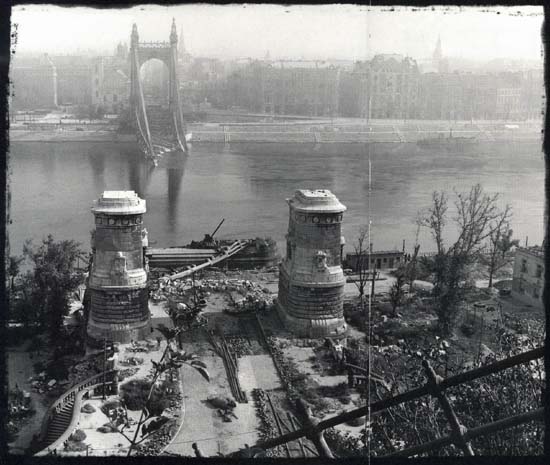
“From a historical point of view it is an unforgivable travesty that Attila and the offspring
of his Huns have the most beautiful capital city along the river of the Nibelungs.”
Adolf Hitler, Tischgespräche im Führerhauptquartier, Stuttgart 1976, 246
of his Huns have the most beautiful capital city along the river of the Nibelungs.”
Adolf Hitler, Tischgespräche im Führerhauptquartier, Stuttgart 1976, 246
By the end of 1944 the oil fields of Western Hungary provided the largest oil and petrol production quota of Germany. For the German army it was a vital interest to keep the Hungarian front as long as possible. On December 1 Hitler declared the city “Festung Budapest”, a fortress to be defended door to door. The triple line of defense built out around the city was broken through by the Soviet army only gradually and at the cost of great losses. During the siege nearly one-tenth of the city’s civil population died, more than a quarter of the houses became uninhabitable, all the bridges and several historic monuments were destroyed.
Miklós Tamási and Krisztián Ungváry published in 2006 their album Budapest 1945 with an ample – and mostly unpublished – photo documentation of the conditions after the siege. Here below we present some of these photos located on the 1941 map of Budapest. The book is worth to be consulted not only for the rest of the photos and for the good historical introduction, but also for the long captions that explore in detail the background of each sight and through this the historical context of the entire siege.
“During the siege few have committed themselves to the risk of taking photos which increasingly involved mortal danger. Almost all the photos of the defenders were destroyed. We cannot display the atrocities, the close fighting on the street, the moments of antifascist resistance. Our volume can only choose from the material that has been available for the posterity. This is why our photos primarily represent various buildings. However, this must not make us forget that behind the ruined buildings there are thousands of human tragedies. Our work intends to commemorate them as well.”
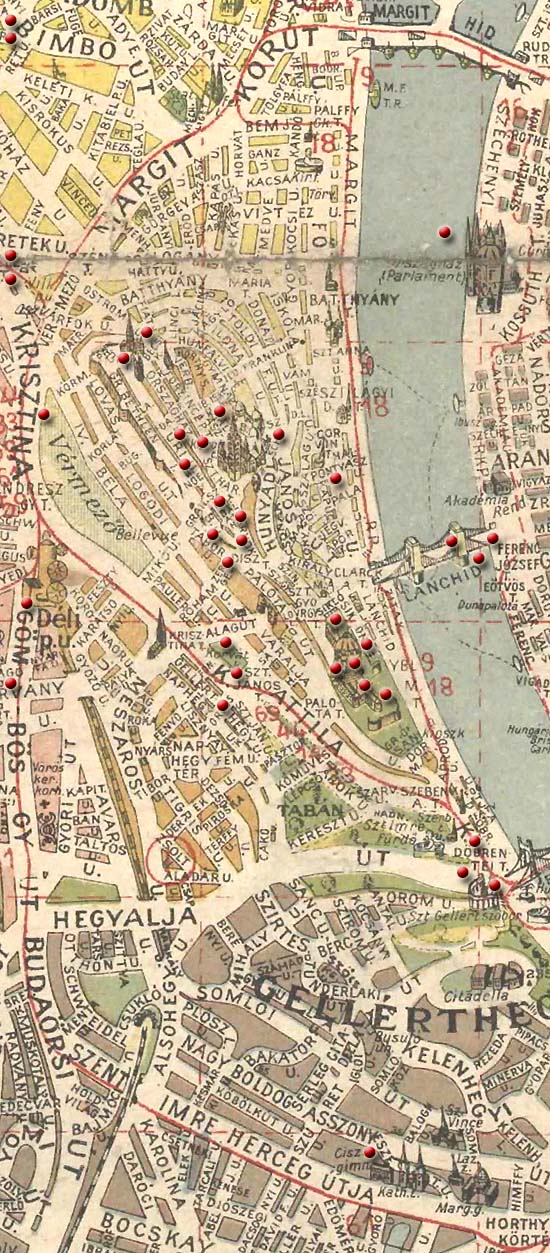
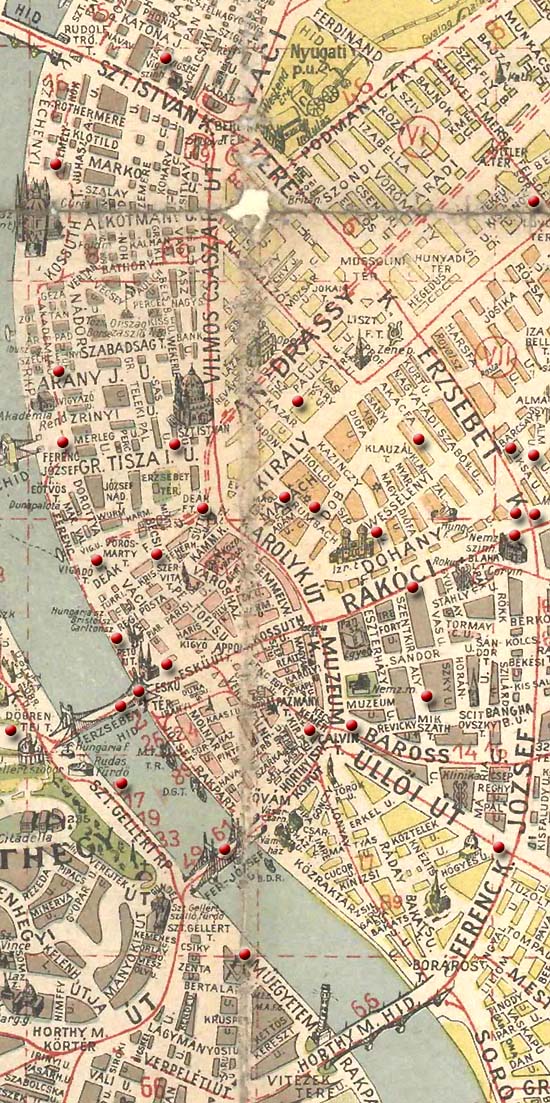
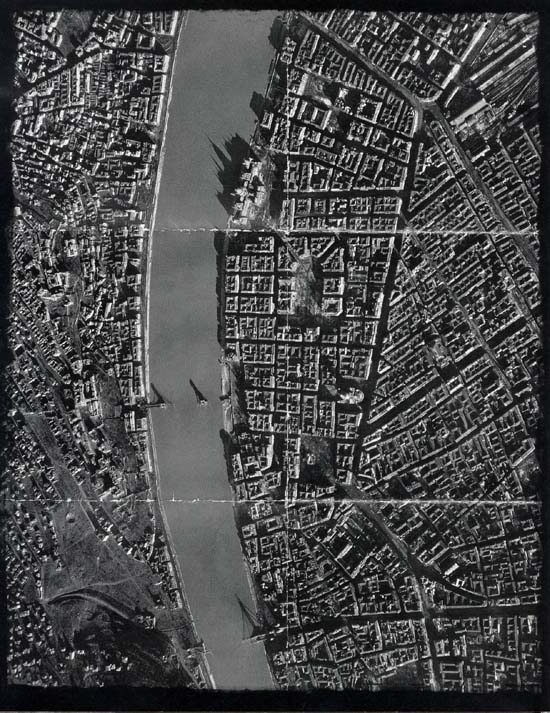
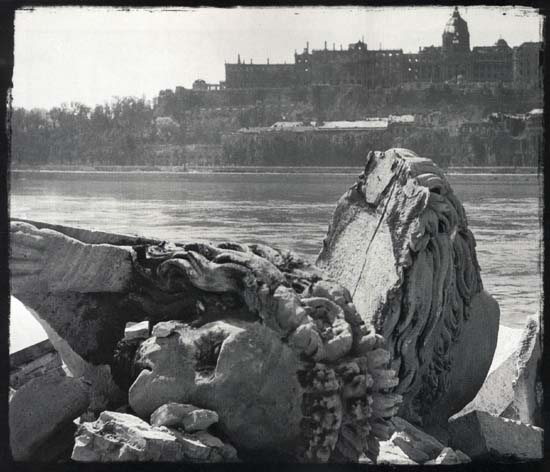

























































7 comentarios:
Thank you for this post, Studiolum. I can't believe I am the first person commenting, but from the other hand you can't find words when see how easily we can destroy what was build for decades.
Araz, you were the first to comment but, as you said, sometimes words cannot express the entangled feeling we are made of, a feeling which this post both recalls and triggers.
Thank you, Studiolum.
Thank you, Araz and Francesca (and also Walter who after his deleted comment wrote the same in a private mail). I think it is quite necessary to often watch such photos to remember how easy it is to lose what we have and how dangerous and irresponsible it is to play with the fire, both for the politician and for the citizen.
Minnesotastan at TYWKIWDBI has just published a similar map of the bombs on the London Blitz.
For further information on the London Blitz Map ("Bomb Sight"), including images and comment on the map's limitations, see:
http://www.theregister.co.uk/2012/12/12/blitz_map/
Thank you, Walter, it’s really a good review.
Publicar un comentario